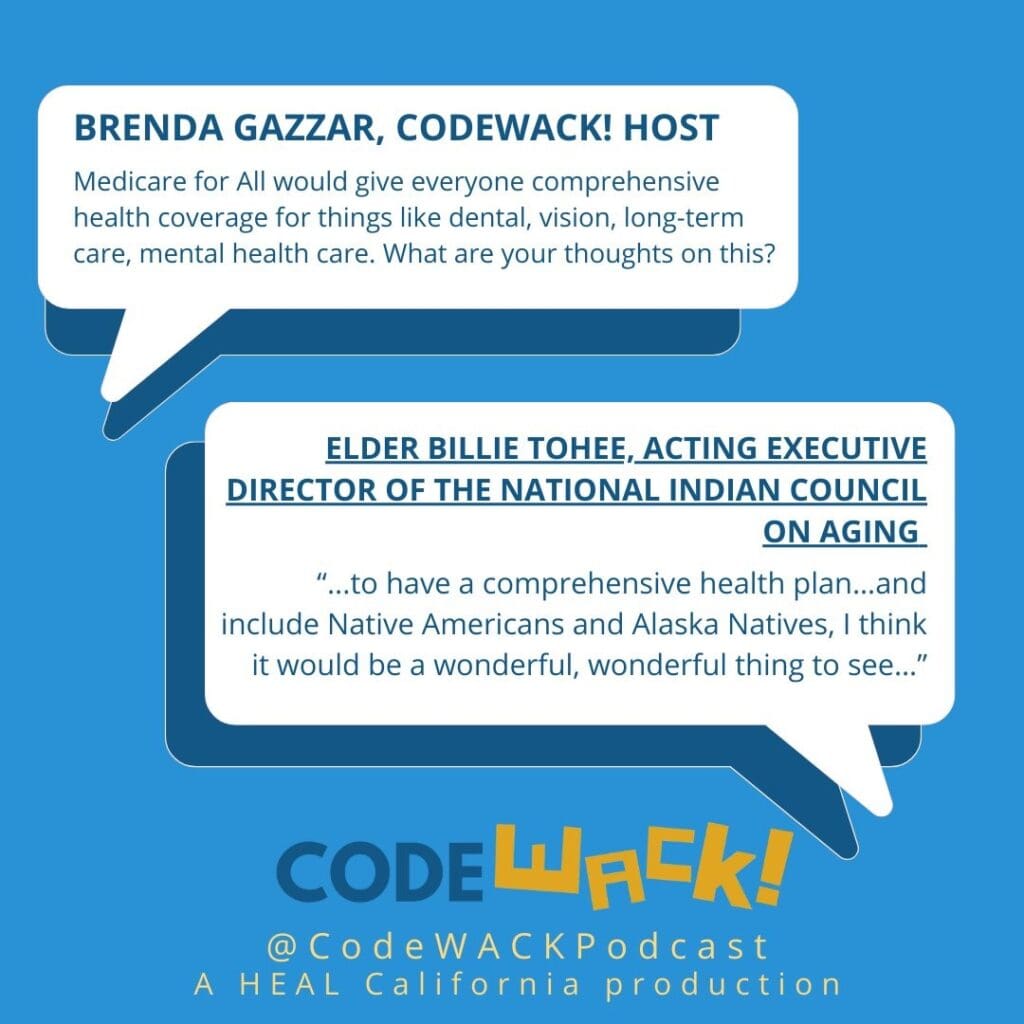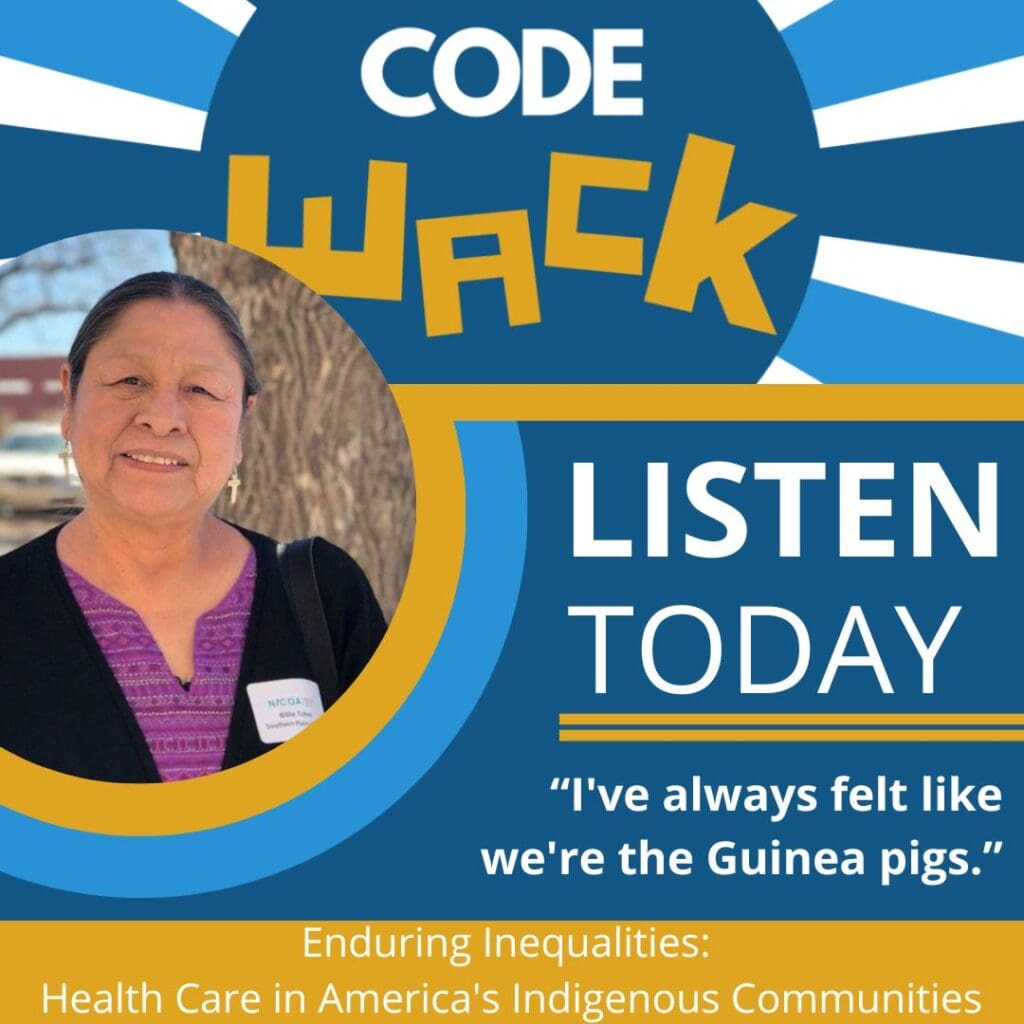What’s being done to help elder Native Americans receive culturally competent long term care? Would it surprise you to learn that relying on the Indian Health Service may not be enough to meet their needs? Why are some members of this highly vulnerable population buying health insurance too?
To find out, listen as National Indian Council on Aging Executive Director and Former Chairperson Billie Tohee describes the challenges and solutions for Native American health.
Listen to this enlightening journey as we delve into the challenges faced when it comes to accessing quality healthcare in America. What are the obstacles encountered when seeking care through the Indian Health Service, the principal federal healthcare provider for American Indians and Alaska Natives?
To shed light on these vital issues, National Indian Council on Aging Acting Executive Director and Former Chairperson Billie Tohee speaks with HEAL California. As an enrolled member of the Otoe-Missouria Tribe of Indians and a descendant of the Iowa Tribe of Oklahoma, her insights are both powerful and enlightening.
Retirement doesn’t just mean spending your days playing dominoes at the senior center. A lot of Native elders are taking up second careers or at least new part time jobs after retiring. A 2022 survey by U.S. News and World Report found the percentage of workers over age 62 has increased significantly in the past 10 years.
Inflation is part of the reason. So is the desire for meaningful work. From per caps to the availability of senior housing, Native workers considering retirement have specific concerns when it comes to winding down their working years. Listen as National Indian Council on Aging Executive Director Larry Curley discusses retirement in Indian Country with Jim Cordry (Rosebud Sioux), a retired federal employee and investment advisor for 21 years; and Leilani Wilson Walkush (Tlingit), chief compliance officer for Breakwater Investment Group, LLC.
Dr. Crystal Hernandez, host of the Black Feathers Podcast, talks with National Indian Council on Aging (NICOA) Executive Director Larry Curley (Navajo Nation), NICOA Data Analyst Desiree Lapahie (Navajo Nation), and NICOA Project Coordinator Rebecca Owl Morgan (Eastern Band of Cherokee Indians). They discuss updates to the toolkit “Understanding Disabilities in American Indian & Alaska Native Communities”.
Learn the amazing story behind the creation of the National Indian Council on Aging (NICOA) — and the powerful role it plays in improving the lives of Native elders. Dr. David Derose, host of American Indian & Alaska Native Living, interviews NICOA Executive Director Larry Curley.
At least 44 percent of American Indian and Alaska Native caregivers surveyed say they are the only person available to tend to their loved one. And at least eight out of 10 say their cultural commitment is an important factor in caring for an elder or someone else needing it. But people don’t always have to take on giving care alone. Tribes and organizations offer a wide range of options to ease the burden. National Indian Council on Aging Executive Director Larry Curley speaks more about this.
Elders are already at risk for isolation. The pandemic only worsens the problem as the best way to protect them from the threat of COVID-19 is to keep them separated from other people. But that isolation can increase the risk of serious illnesses like heart disease and stroke and mental health issues like anxiety and depression, according to the CDC. The National Indian Council on Aging (NICOA) launched the Connected Indigenous Elders campaign to keep elders engaged. Hear NICOA Executive Director Larry Curley talk more about the program and what families and communities can do to make sure elders are connected and healthy.
Power Station is a podcast about change making. They talk to nonprofit leaders about how they build community, advocate for policy change, and make an impact in overlooked and underinvested communities. In this podcast, they interview NICOA Executive Director Larry Curley.
Larry Curley has felt the destructive force of U.S. government policy on American Indians first-hand.
A member of the Navajo Nation, he lives with the legacy of dislocation and stripping of identity caused by the Removal Act of 1830 and the Assimilation Act of 1887. He has directly experienced the Termination Act of 1953 and Relocation Act of 1956 as blunt instruments of a federal power grab.
As a young and fearless advocate in 1978, he drafted Title VI of the Older Americans Act, requiring federal funding for elders to be deployed to tribes instead of states. And to guarantee that elders were taken seriously by policymakers, he founded and now leads the Native Indian Council on Aging (NICOA).
NICOA is a force to be reckoned with. During the pandemic, which stole 5,000 Native lives, predominantly elders, its leaders adapted by advocating through Zoom. They’re in-person conferences build a policy agenda focused on the physical, mental and spiritual needs of Native elders. They are based in wisdom, respect and advanced by collective action. Next stop: Capitol Hill.
The vaccine is already offering a sigh of relief to thousands of people. But many Native people remain wary for a variety of reasons. Health officials are looking for ways to get the message out that the vaccine is safe and effective, especially compared to the alternative. Meanwhile, tribal leaders and others are particularly worried about the toll the disease is taking on elders and what that means for tribal language and culture. National Indian Council on Aging Executive Director Larry Curley says more during his interview with Native America Calling.
As businesses and public gatherings start opening up, elders face a unique dilemma. The Centers for Disease Control and Prevention says elders 65 years and older are at higher risks from COVID-19. At the same time, socializing with others face-to-face and services like senior center meals help elders stay engaged and connected. We’ll check in with elders to see what specific challenges they face and how elder services are adjusting to keep elders in their communities healthy and connected. National Indian Council on Aging Executive Director Larry Curley says more during his interview with Native America Calling.
The biennial gathering of amateur senior athletes is setting aside a day to celebrate the many American Indian and Alaska Native athletes who participate. Participants compete in 20 events from swimming to shuffleboard. The National Senior Games originated as an effort to promote a healthy lifestyle for elders over 50. This year’s games are in Albuquerque, New Mexico. Native America Calling recorded their podcast live at the games with a discussion centered around active and healthy elders. National Indian Council on Aging Executive Director Larry Curley speaks more about the event during the podcast interview.
This podcast was created by the National Indian Council on Aging (NICOA) as a means to share, inform, advocate for, and educate American Indians, Alaska Native elders, and anyone seeking more information about the issues involving these groups of people.
This first informational episode is to introduce the listener to NICOA and its Executive Director Larry Curley. It focuses on when, why and how NICOA was founded, its goals and future prospects.
The Office for American Indian, Alaskan Native, and Native Hawaiians interviews NICOA Executive Director Larry Curley on December 12, 2018.

